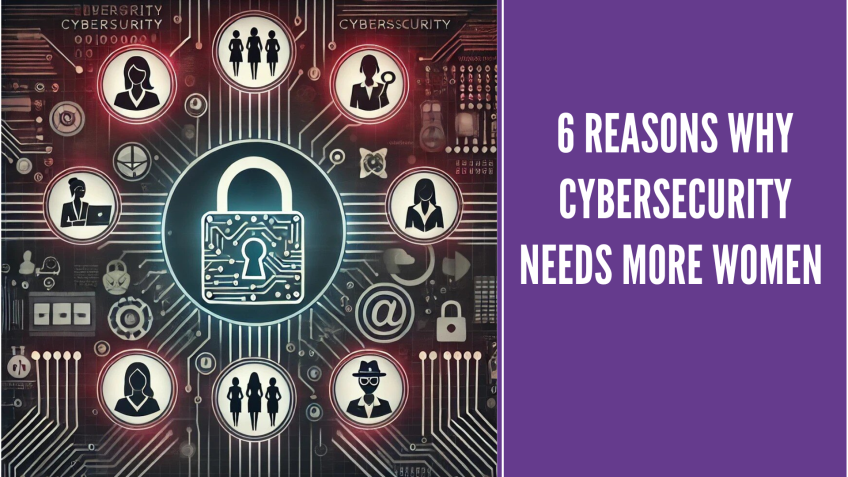Results are in - the most effective ways to close the Gender Gap in STEM!
Claudia Pellegrino
Principal Consultant PA ConsultingIncreasing Gender Diversity in STEM: An Insight from RPA Consulting
Introduction
Hello, I'm Ms. Kia Pellegrino, the women-in-tech leader at RPA Consulting, a global consultancy company. As leader of the award-winning Women in Tech team, I'm here to share our latest survey results into how to increase gender diversity in STEM, specifically in technology.
The Importance of Gender Diversity in STEM
Our survey, which reached over 300 organizations, brought about some positive surprises. 56% of the executives in STEM companies consider closing the STEM gender gap as a top priority for their organization. Moreover, 80% of them agreed that an improvement in gender diversity is crucial to fostering a culture of innovation. However, we also found the need for continuous effort, particularly in addressing the differences in satisfaction levels between men and women, which averaged a 12% gap.
Identifying Barriers to Gender Equality
Our survey revealed considerable barriers to achieving full gender diversity. Interestingly, everyone agreed that the hindrances were often circumstances they were not directly responsible for removing. For instance, C-suite leaders were more likely to attribute the lack of gender diversity to missing employee-led networks and communities, handled mostly by junior employees. Conversely, middle managers were more likely to blame the lack of C-suite mentorship and sponsorship as the primary obstacle.
Practical Actions for Increasing Gender Diversity
To increase gender diversity and foster equality, our research identified key actions applicable to the four stages of the employee life cycle: attract, recruit, retain, and retrain.
- Attract: Companies can promote and advertise flexible working opportunities, openly advertise equal and competitive salaries, and demonstrate a tangible commitment to Diversity and Inclusion (D&I).
- Recruit: Recruiters should remove bias in the recruitment process and job applications, offer women-centric benefits, and actively increase awareness of STEM roles among students and adults.
- Retain: Fostering an inclusive culture through networks and supportive leadership, and encouraging a healthy work-life balance are crucial for retention.
- Retrain: Encouraging on-the-job learning, offering external training, and building career-change schemes are key to retraining and advancement.
Concluding Remarks
In conclusion, our research shows that flexible working opportunities and a focus on retraining are practical steps to increase gender diversity in STEM fields. Integrating D&I commitments into strategies and focusing on intersectionality should also be prioritized. Thank you for joining us today, and for those looking for further insights, feel free to download our full report and sign up for our newsletter.
Video Transcription
MS Kia Pellegrino. And today, I will be talking to you about the latest results from our survey into how to increase gender diversity in STEM. So this mean, I'm the women in tech leader RP. A consulting consulting is a global consultancy company.Uh But with over 3000 experts as a, as the leader of the women in tech team, I'm proud to be leading a team that just last year won the award for best women in Tech Network in the UK. So as part of this team, last year, we commissioned our report, the report looked into what were the most effective activities to close the gender gap in technology. So we surveyed over 300 organizations and we were positively surprised by the results. So first of all, we found that 56% of the executives in STEM companies actually felt that closing, closing the STEM gender gap wa was one of the top key priorities for the organization. 17% of these executives felt that this was the top priority for their organization and the positive news continued. In fact, the majority of decision makers actually felt that there was a recent improvement within gender diversity in stem 78 agreed with improvement and 80%. So basically, almost everyone fully believed that this was crucial to foster a continuous culture of innovation in the upcoming years. I have. What a survey also showed us is that there is more to do. Yes, satisfaction satisfaction levels are high.
However, men are 12% on average, more satisfied than women. And also we found that the C Suite was blinded by a full sense of satisfaction with the, the C Suite that been more satisfying than middle management. Well, what we found is that within all these fake satisfaction levels, there was still a large proportion of the survey people that were not happy with the progress made to date. And almost everyone still believed that there were some considerable barriers to full achieving gender diversity instead.
But what are this barrier? It was very hard for us to identify a single, most important barrier. But actually, it was uh and what was even more striking is that no one could agree on the most significant barrier to equality. But what what everyone could agree to is that it was something that they were not directly responsible for removing. For example, C suite leaders were 20% more likely to blame the lack of employee employee led networks and community as the main factor hindering gender diversity.
This is interesting because it is usually something uh some activities which are led by more junior employees. At the same time, middle managers were 16% more likely to blame lack of c suite mentorship and sponsorship as the main factor. Again, they were blaming something that they could not directly control. So in all of these, uh and everyone sort of agreed that we need to change, but we felt there was no clear list of what were the most effective things that companies could take that would really make progress, what are the most feasible actions? But then also at the same time, what are the most effective actions? So we have identified the and the key options against the four stages of the employees life cycle, attract recruit, retain and retrain. So if our companies want to attract, attract an agenda, diverse workforce, what they need to do is promote and advertise flexible working opportunities, openly advertise equal and competitive salaries and demonstrate tangible commitment to DN I. These were the three options that were rated at the most effective but also the easiest to implement in our survey that included over 300 executives and experts in DN I. So what we mean by flexible working opportunities?
Well, first of all, this goes beyond the, you know, uh part time opportunities, it can also include um employees being able to choose their own rota. It can also include term time arrangements. And the best way for companies to attract employees is to include a list of what flexible working means to them. In their job in their job adverts. The second one is openly advertised, equal and competitive salaries. Everyone still felt that women were less likely to ask for a pay rise. And it was very interesting when interviewing male analy that we got and clearly told men should go up to women and say I get paid this, this is the what you should get paid. So by opening advertising and competitive salaries in job applications, then companies will be more likely to attract a diverse workforce and lastly demonstrate commitment to DN I. So this is about how company portrays itself to the public. For example, we've seeing follow big companies publishing gender diverse dashboards.
This is a very strong way for companies to publish the data set and also accept that they are not yet there, but they are on a journey to really create a gender diverse workforce. All of these actions were rated at the most effective by approximately 35% and the most, the most easy to implement by approximately 40%. So um uh a big distinction between these actions and the remaining actions that you can see on there. And I plotted on the chart. So after a track, how do you make sure that you actually recruit the employees into your company? What are the most effective option to recruit the employees? First of all, remove buyers? So again, I'm talking about bias in a job applications to make sure that all of the job descriptions are gender decoded, also bias in the recruitment environment. So for example, um it might not be very good for a woman to walk into an interview where an office is heavily male dominated where for example, there is a lack of san sanitary products in the toilet and also bi bi bias from the interviewees through for example, anti bias training for all the recruitment officers, but also the people from the business that are going to hold the interviews.
Second one is all around offering and talking about women centric benefits. Again, I'm talking beyond simple maternity leave, things like menopause leave and ASOS for example, gives up to 10 day. Also um uh being able to sponsor like breathable clothing for women going through menopause period as well.
It's a very important one to consider, which is often considered to do. It's estimated that 500 million is lost every year in the economy for six days taken because of period. So again that there is a strong opportunities for companies to be different in that space as well and offer more benefits are centered on periods to women and last but not least, actively increase the awareness of stem roles in to students and adults. So there's a lot of school outreach programs there. However, there's some top tips, for example, make sure that you have a good mix of volunteers that you do not want a women because it should not just be a burden on women to go to school and encourage other women to join them, the burden should be on everyone. And also, you know, make sure that we have a wide uh syllabus of offering, don't just go there and offer and offer keynotes, but you can also offer code alongs in other, in other activities, retention. So it is very important for an organization if they want to continue to build an uh um gender, that workforce, to make sure that they are able to retain employees, you can do that by a lot of things.
But these were the breaky actions that were deemed the most effective but also the easiest to implement. First of all, build a culture, an inclusive culture through networks. Networks are super important. There is so many internal external networks. There are again some top tips which emerged from our research on how to run a successful networks, be purpose led. Don't just do events for the sake of doing events, be more campaign led. What are the key messages that you want? Your um your team, your organization uh to uh and to huddle around every year, dedicate fixed capacity, not everything can be done outside of desk. And last the metrics. Raven do not just measure the number of attendees at your events, but also also measures with um which uh runk of attendees never turns up to your events, which geographies never turn up to your events so that you can really understand which areas of your organization you should target with your network because they really feel alienated, then create supportive leadership.
So again, supporting leader, leadership is super important. And this being, being an adopt a very open leadership style, being, supporting the sense of passing down opportunities, being supportive in the sense that male leaders can admit that they don't know it all. But again, they want to treat this as a safe space for them to learn about what it is to be a woman in business and how they can help other women and last encourage a healthy water life balance. I think everyone knows how important that water life balance is. But how do you actually actively encourage it? And there was a lot of uh of a research and a lot of outputs from our qualitative interviews which basically said, well, you know, it's all about seeing your boss, seeing your leader and leaving a meeting because they have to go and pick up their son from school. It's all about celebrating the achievements like employee of the month for someone that actually works practical part time, the way you really demystify, flexible working and you really start encouraging a healthy work life balance across the whole organization and last retraining.
So, retraining was actually one of the areas that not a lot of companies consider when they think, how do we build that? Um um uh uh um the best workforce of the future. So three key things. First of all, encourage on the job learning, that is definitely the most effective thing. However, it is very hard for companies to create safe, safe spaces for learning. First of all, they need to create a framework for retraining. And also they need to encourage women by letting them know that it's ok not to know at all that it's ok for them to apply for on the job learning opportunities. So they might not feel ready and they would be supported every step of the way. The second one is an external training which can be paid for or unpaid for. Again, very, very important for companies to be open about what would be paid by the employees, what would be paid by the company. Very important on companies to also to um to agree with the employees, how they can plan to bring in the additional knowledge into the company and how they're planning it to um uh share it with everyone else as well. And also companies should uh and really partner up with their training providers so that they can create training opportunities even if paid for, which are tailored to the needs of the companies. So not just buy out of the box products for their employees to be trained in.
And last, it is all about career changing. So I fully believe that the career changing is an incredible opportunities that will bring more women in stem and technology. So um what we found from our research was really to um for companies that they had to create their own career changes schemes so that they could understand what candidates they were wanted to target, how they wanted to bring those candidates in for a tailored application process.
And also what would be the training and provision once the employee landed in the company, how could you make sure that you were enabling the employee to fully career change and and learn new skills through a tailored training program built by the company itself. So definitely building career change skills is probably the hardest one of these three because it's very time consuming from a company perspective. But again, it it's definitely the most tailored solution to a company's problem. So a summary, these were some final remarks that we have seen emerging from our research. Again, we surveyed 300 executives in 300 stem companies through our quantitative surveys. And then we and we increased our findings through 16 qualitative interviews. So first of all, you beyond flexible working.
Yes, it was definitely one of the most important actions and effective actions. But there's much more to be explored as our research shows do focus on retraining it. There's a lot of untapped potential there integrate DN I commitments within your strategy. Again, don't think about DN I here your business objectives there, interlink them so that you can fully achieve your business outcomes through a more diverse workforce. And last do really focus on intersectionality. And for example, when running school outreach, that it's always very important, there is an LGBT Q A element in there as well. So thank you for joining us. I'm Claudia from women in tech IP A consulting. This was just a quick snapshot into our research. And again, we're very proud to be publishing this report. This report is now live. So please, you can download the report there with the QR code on the left and uh keep in touch and sign up to our, to our newsletter with the QR code on the right. I'll be now answering any questions in the chat or in the Q and A section as well. So if we have time for one for one question, yes. Uh how would you come back? Divided attitudes against previous leave that? Um Well, I think that there's definitely an education element to be honest, like, um you know, men are probably many in the company don't really know our is that the numbers are actually quite stark if you feel like how many money the economy losing out because of because of the, because of the.
So I think the second education on what period is, what is the impact on business. And also again, going back to them, um you know, to the main point which is why is the most important that if companies do not want to hire women because they might take off sick days because they, they, they will have that period. Then again, does that company really want to create a diverse workforce? Does that company really understand the economic benefit of diversity? So, you know, especially with execs, I would always go back to the economic point, you know, we're doing this because it makes sense from a really business perspective. Besides the fact that of course it is the right thing to do any other questions in the Q and A or super. So I think that is it again. Um Thank you so much for coming. Please download our report. Please do keep in touch by signing up to the newsletter with a QR code on the right. And yeah, please do reach out to me on linkedin. I'm Claudia Pellegrino. Um My details are on the stock as well. Um We'd be more than happy to connect to continue.






